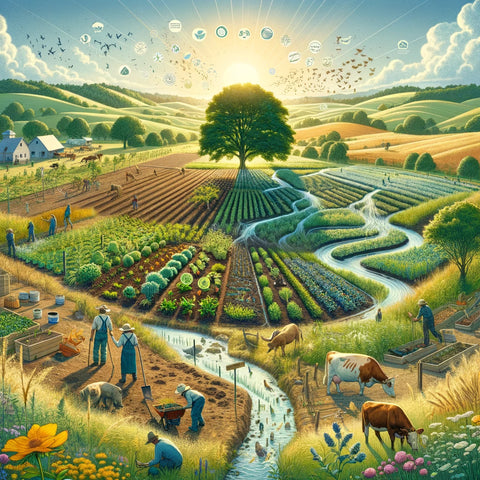The Transformative Impact of Regenerative Agriculture
Seeds of Renewal: The Revitalizing Force of Regenerative Agriculture
Agriculture
A revolutionary shift in farming and land management, regenerative agriculture aims to restore the planet's soil, biodiversity, and water cycles rather than just maintain them. My perspective on farming has shifted from that of an enemy to that of a cooperative collaborator with nature as a result of my research into regenerative methods. Let me describe regenerative agriculture by sharing my story of coming to terms with who I am, the challenges I've faced, and the profound connection I've developed with the land.
Regenerative agriculture is around enhancing soil health, which is crucial for all land life. My first foray into farming was no-till, which aids soil preservation by retaining water and structure, reducing erosion, and fostering the development of a rich and varied ecosystem. Waiting for the earth to heal itself, instead of giving in to the usual practice of plowing, was the tough part. A formerly desolate place became a thriving habitat teeming with earthworms, bacteria, and fungus as if I were a conductor watching a symphony of soil regeneration.
Cover cropping, another fundamental practice in regenerative agriculture, is where I initially became aware of plants' capacity to heal soil. My understanding of soil fertility, weed management, water retention, and the importance of insect habitats was expanded via the process of growing a wide variety of cover crops. The magic of seeing a green manure crop emerge and improve the soil was a lovely demonstration of nature's resilience and regeneration.
The thing that really opened my eyes was the part that cattle played in the regeneration process. Restoring the grasslands was just one of the many benefits of herding animals over the area in regulated grazing patterns that mimicked the movements of natural herds. Soil fertility improved, biodiversity increased, and carbon was stored as a result of livestock grazing, trampling, and fertilizing simultaneously. It was a model of how well-coordinated human efforts might enhance the curative effects of nature.
To better collect, store, and distribute rainwater over the landscape, I learned about regenerative water management techniques including keyline design and swales. This strategy not only restored groundwater but also reduced drought stress, allowing ecosystems to become more robust and capable of surviving in arid conditions. Smart water usage transformed the once-dry terrain into an oasis, demonstrating the superiority of coordinating human activities with the natural water cycles rather than against them.
The journey into regenerative agriculture has also included connecting with others who share similar interests and sharing knowledge. From online support groups to farmer's markets, people have found solace in sharing their experiences, both good and bad. That agriculture should be a part of the solution to environmental challenges is the driving force behind this movement, which aims for a more sustainable future.
Regenerative agriculture is more than just a set of practices; it's a concept that takes into account the interconnectedness of all living things. We have an obligation to leave Earth in better shape than we found it if we want subsequent generations to inherit a planet rich with life and opportunities.
Embrace the revolutionary impact of the regenerative agriculture ethos on the environment, our connection to it, and the community at large as we plan our expedition. Let us portray it in a way that explains it. Imagine a world where a balanced cycle, plentiful biodiversity, good soil, and water conservation all represent the interconnectedness of all aspects of nature.






Leave a comment